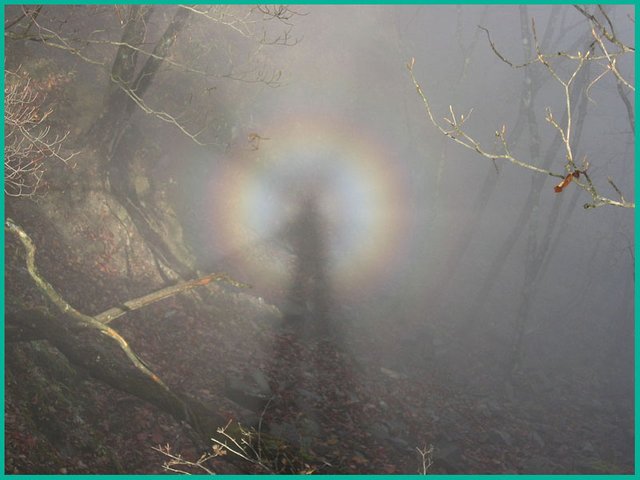The simplest analogy of the mirage is the reflection of your face in the watery surface. In optics, this is called an "imaginary image."

Water has an optical density and a refractive index, other than air. By the same principle, mirages work. The main condition for their appearance is a sharp change in the optical density of the air.
Mirages are often associated with deserts, and such an association is completely justified, because they appear where the surface of the earth, and hence the layer of air above it is strongly heated by the sun's rays. The temperature at the surface must be really high - about 60-70 ° C (to this temperature and sand is heated in the desert, and sometimes even the air above the asphalt road).

Mirage over asphalt road / ©Depositphotos
In this case, the optical ray coming from some real object deviates along the curve in the lower layer of air, falling into your eyes, which suddenly begin to see this object upside down. It is such an inverted imaginary image of the sky that creates the illusion of a watery surface in a lifeless desert. This phenomenon in optics is called the lower mirage. Such a picture, however, is not stable: as the heated air tends upwards, the mirage can tremble, distort, or even completely disappear.
The so-called upper mirages are more rare. The condition for their appearance is the presence in the air layer above the earth's surface of a strong temperature inversion (increase in temperature with altitude). When this happens, the rays are refracted just in this heated layer and the mirage that you see, as if hovering above the earth. Alas, this kind of mirage can not be called sustainable either, because such an unusual temperature distribution in the atmosphere does not last for a long time.
And it is quite rare that the upper and lower mirages appear simultaneously. They are called "fata morgana" - by the name of the fairy Morgana, who lives, according to legend, on the seabed and deceiving travelers with visionary visions. The rays in this case are refracted both in the upper and in the lower layers of the air. As a result, you see a distorted beyond recognition, taking an ordinary stone for a skyscraper, and a rock for a medieval castle. Fata Morgana can be observed in low latitudes in close proximity to the seashore.
Here is how describes the emergence of Fata-Morgana in his novel "Black monk" Anton Pavlovich Chekhov. "A thousand years ago, a monk dressed in black walked through the desert, somewhere in Syria or Arabia. A few miles from where he was walking, the fishermen saw another black monk moving slowly across the surface of the lake. This second monk was a Mirage. Now forget all the laws of optics, which the legend seems not to recognize, and listen to this. From the Mirage turned out another Mirage, then from another third, so that the image of the black monk was without end be transferred from one atmospheric layer to another. He was seen in Africa, then in Spain, then in India, then in the far North...»
Another very surprising optical phenomenon is refraction, which occurs, on the contrary, in high latitudes, in the circumpolar regions. Refraction is nothing but the refraction of the sun's rays in the atmosphere itself. This phenomenon allows us to see our daylight even when it has gone beyond the horizon. Or vice versa - before the dawn comes. In this case, the refraction of the rays seems to lift the image of the sun, and you see the sunrise before its real onset. The point here is the same: the sunlight spreads in the air not in a straight line, but along a convex curve of the line.

The phenomenon of fata morgana / ©Depositphotos
It was refraction for the first time observed by the Dutch navigator Willem Barents on Novaya Zemlya in the winter of 1596-1597. This phenomenon he called the "effect of the New Earth." And it is in connection with this effect that the polar day at the poles can be 14 days longer than the polar night, although it is "supposed" to last exactly six months for the day and night.
A remarkable and documented optical phenomenon is, among other things, the so-called Brocken ghost. It is also called a mountain ghost, which in reality is nothing more than a shadow of the observer on the surface of clouds (fog) in the direction opposite to the sun. The shadow can appear to the observer very large and sometimes surrounded by colored rings, it is also capable of "stirring" (sometimes quite unexpectedly) because of the motion of the cloud layer and the density fluctuation in the cloud. Brocken ghost can be seen in the mountains during fog or clouds, or even from the aircraft. Known for this phenomenon is due to the peak of Brocken , which is in the mountains in Germany. Constant fogs and the availability of low altitudes allow us to see it very often.
The Brocken Ghost / ©Depositphotos
Maybe it is the mirages that can explain many other evidences of the appearance of "ghosts" or, for example, UFOs?
